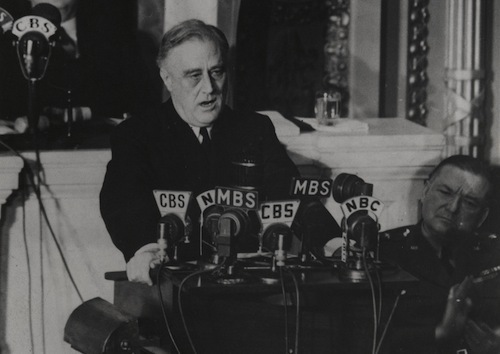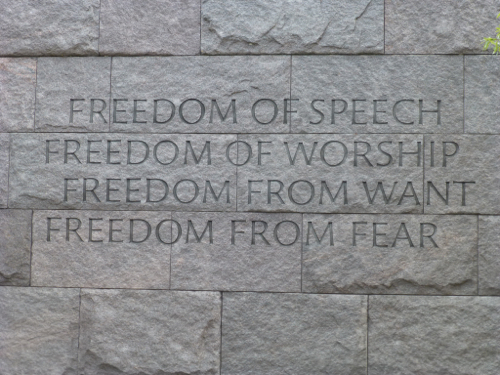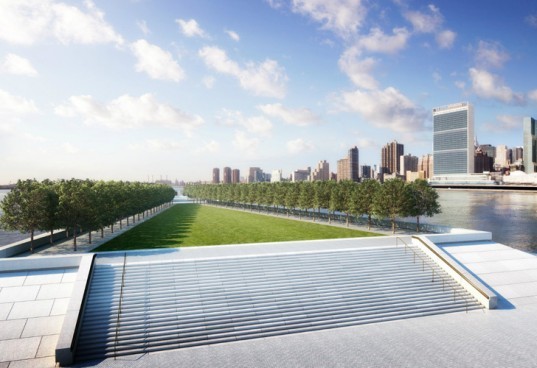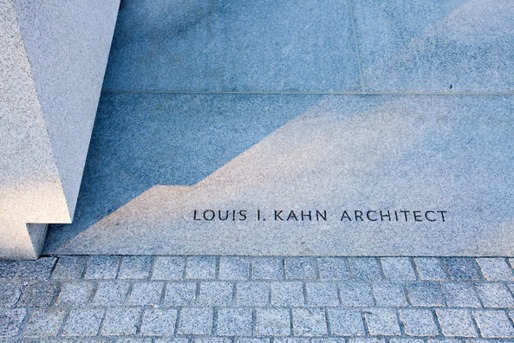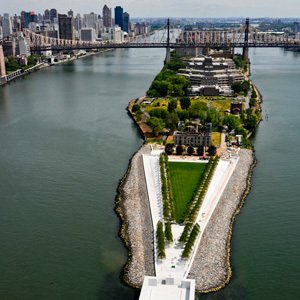
Freedom of Speech
Freedom of Worship
Freedom From Want
Freedom From Fear
On Wednesday morning, following the much-anticipated, ceaselessly ballyhooed second presidential debate Tuesday night at Hofstra University in nearby Hempstead, Long Island (aka New York State), President Clinton, along with a distinguished array of political and civic leaders both active and retired, will inaugurate the Franklin D. Roosevelt Four Freedoms Park, dedicated to the 32nd president after 40 years of planning and development, and 62 years after his death. Just about right as a measure of history's abiding measure.
It defines the southern prow of the eponymous Roosevelt Island in New York City directly opposite the United Nations headquarters, where the East River forks in a stony wedge separating inland flow from the rush of ocean tides. Next stop: Europe and beyond, just as FDR viewed the globe ahead of his time. And it represents an unusual phenomena - the contemporary realization of a design approved two generations ago, but one that fell victim in the mid-seventies to the fiscal tumult of a declining city with its attendant policy realignments.
And it was conceived by the great architect and design prophet Louis I. Kahn, whose bankrupt obscurity at the time of his untimely death in 1974 by heart attack in Grand Central Terminal (arms laden as they were with blueprints of the Four Freedoms plan and his body unidentified and unclaimed in the City's morgue for more than three days) has been supplanted by universal broad acclamation. Such stature was fortified in part by the celebrated 2003 documentary My Architect: A Son's Journey, written and directed by his estranged and illegitimate son, Nathaniel. In sum, it is only recently that he has been recognized as perhaps America's greatest architect in the latter half of the 20th century. Such lapse in appreciation was yet another reason for its long moratorium and yet a central catalyst for a sustained determination to build it, thanks to a decided nonprofit push under the volunteer guidance of Ambassador William vanden Heuvel.
What perhaps matters as much as anything in the midst of such a close, high-strung presidential campaign is an interlude like this, taking stock of the slow arc of history judged accurately only through the lens of time-tested retrospection. The inevitable advent nowadays after four years or so out of office of "the presidential library" (just imagine the crowds there would be for, say, the "Millard Fillmore Library" had such a place-making imperative been in place since the Republic's founding...) adds to its welcome reprieve: A setting where such set expectations yield instead to resolute civic-minded vision that has stood time's test. It reassures us that the ever-mounting velocity of daily events can and must still leave concurrent space for slow synthesis.
Frank Gehry's proposed Dwight D. Eisenhower Memorial alongside our capital city's mall as now mired in the crosshairs of controversy would be well served by a comparable dose of measured community commitment minus the deadline-oriented fiats of office holders and their attendant bureaucracies. Whatever the final design resolution, it can only improve with such temporal filtering.
The Four Freedoms Park design-- realized at last-- unites classicists and modernists alike guided as they are by the timeless essence of Kahn's observation about the built world at its best, "What was has always been, what is has always been, and what will be has always been."
Regardless of what Tuesday's debate results herald in its instantaneous wake, all Americans and those who admire us should take stock the morning after to recall the essential principles that have animated our nation's abiding purpose as the four freedoms at last summarize with lapidary precision.
